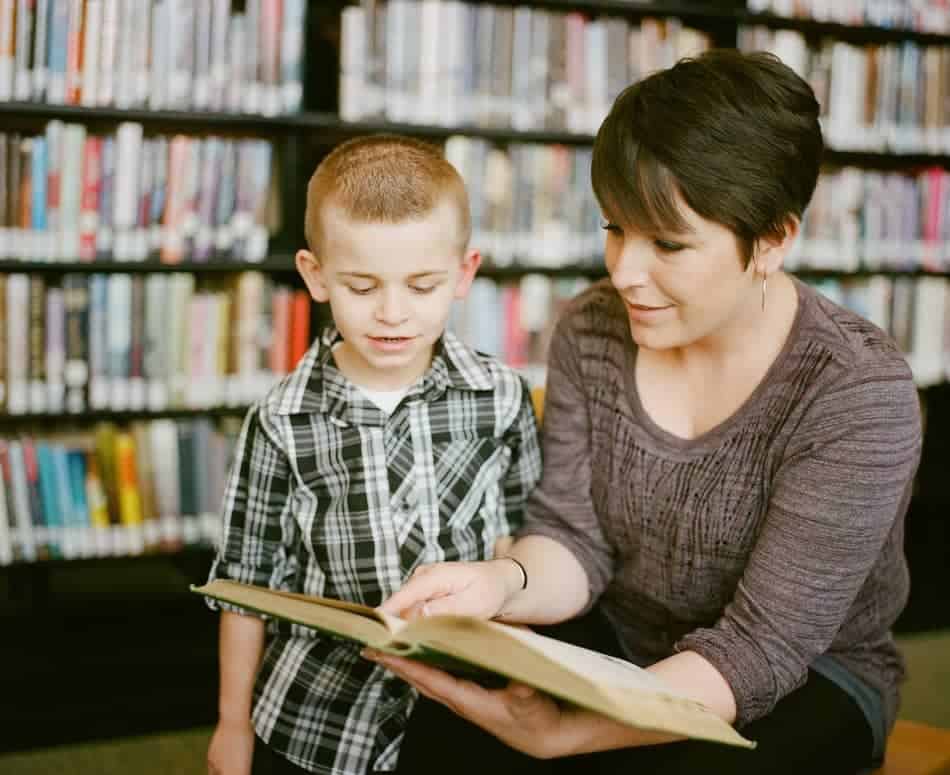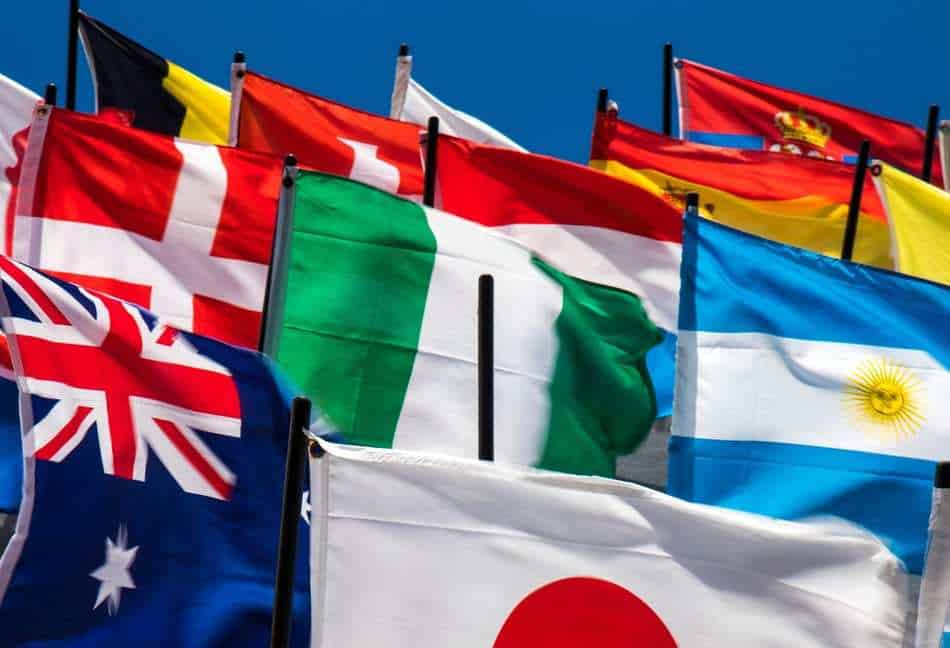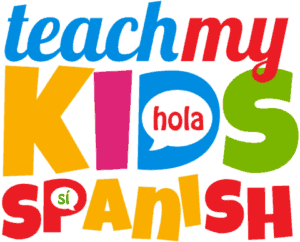
People learn second languages for a number of reasons these days. But many adults decide against it because they’ve heard that to become proficient in a new language, you need to be a kid. Is it true?
There are advantages to learning new languages at any age. Kids tend to be better with implicit learning methods, like mimicking native speakers, while adults have better attention spans, more freedom, and motivation to learn. At any age, practice is the most important factor in language mastery.
You can still learn a new language regardless of where you are in your life. In this article, I’ll tell you everything you need to know about learning a second language, including the role that age plays, the benefits of adult learning, how languages are best learned, what languages are easiest to learn, and some tips to help you master a new language.
What Role Does Age Play In Learning Languages, and What is the Best Age to Start?
A 2018 study from a few universities in Boston, USA, tried to determine what role age plays for non-native speakers to learn English. The study had over 600,000 participants of varying ages and proficiencies and examined how they learned English.
The study found that grammatical proficiency is best attained by beginning the study of a second language before the age of 18. After 18, new languages can still be learned, but adults take longer to pick up grammatical rules. The study showed that learning should begin before the age of 10 to reach the grammatical fluency of native speakers.
However, the same study showed that vocabulary is learned at an approximately constant rate over the course of an entire life. It’s not clear which is more important for learning – grammar or vocabulary. The researchers argued that it takes around 30 years to fully master any language, whether it’s native or non-native.
It seems that the reasons for changing language abilities over time aren’t due to age, either. Instead, there are a number of factors that determine why some people learn languages faster than others, and these reveal why adults can be just as good as kids at learning languages.
Why Young People Stop Learning Languages After 18
The Boston study presented three main reasons why kids learn languages fastest before the age of 18.
First, social changes. Most students worldwide graduate high school when they’re around 18 years old. Outside the school, they won’t have nearly as many classroom opportunities to learn new languages, and they also will have more responsibilities that will prevent them from practicing and learning.
Second, they master their own language. Research sometimes conflicts on this, but it is generally thought that mastering one language, which happens after 20-30 years, makes it harder to learn others. It’s harder because each language has its own system of rules, and it’s easy to confuse these the more one masters their native language.
Last, the study suggested that brain changes around the age of 20 make learning harder for adults. While it’s undoubtedly true that kids have a knack for learning new things, the study seems to ignore the strengths and adaptability of adults for learning things they’re passionate about.
How Languages are Learned
The belief that adults can’t learn new languages usually assumes that adolescents and babies have a genetic, developmental gift for pattern recognition that diminishes over time. The research on that is mostly inconclusive, but what we do know is that babies, toddlers, and adults learn languages in entirely different ways.
Babies have a fantastic ear for recognizing different sounds. Later in life, sounds will be processed and assimilated to fit into finer structures; like babies, on the other hand, sounds are unfiltered. Babies can pick up on and communicate these subtle variations. In fact, newborns even a few days old cry using the sounds of their native tongue.
As toddlers, some sound filtering takes place. The toddler pays attention to larger segments of communication than individual vowels and consonants. They are more focused on tone and can pick up on accents with tremendous ease, even in languages that they don’t speak.
As adults, we don’t distinguish sounds or accents nearly as well. While babies and toddlers process a lot more information subconsciously to learn, we have to learn languages “the hard way” – by consciously putting in the time and effort to practice. Fortunately, adults are far better equipped to put in this work than kids.
Explicit Learning vs. Implicit Learning
When it comes to learning languages, there are two main ways to go about doing it: explicit learning and implicit learning.
Explicit learning involves delineating and studying patterns and rules, like studying with a teacher in a classroom or learning from online software. The rules can be internalized effectively, but the effort is required to practice.
Implicit learning, on the other hand, means learning without being conscious of what is being learned. For example, if I were to move to Italy and walk into restaurants 5 days in a row, I would probably do better talking to the waiter on the fifth day than on the first. I definitely learned something, but it’s not exactly clear what I learned.
Neither implicit nor explicit learning is inherently a better way to learn than the other. In fact, combining both methods will probably help you learn a new language the fastest. Nonetheless, these provide a major difference between kids and adults in language learning ability. As one grows older, they use explicit methods much more effectively.
Adapting Language and Communication
Did you know that it’s possible to lose your native language? If you’ve lived abroad for many years, you may come home and find you’re not as fluent or quick as when you left.
Studies have shown that you’ll actually lose your native tongue a lot faster if there are others who speak it abroad with you. Since you can communicate and be understood in either of your native or your non-native languages, you begin to forget which is which.
Anyone who speaks two or more languages learns how to separate them in their mind. In a context where I’m supposed to speak English, I’ll say “window.” In one where I’m supposed to speak Italian, I’ll say “finestra.” To speak more than one language well, you have to constantly adapt your communication to the context.
The bottom line is, that language is a form of communication, and as humans, we adapt our communication to our environment so that we can be understood. Even if it’s not “proper English,” we can communicate and be understood in many ways. Our brains don’t think in terms of what is right, but rather, how we can communicate what we mean.
The Benefits of Learning Languages when you’re Older

It’s not a genetic or developmental factor that affects why younger people are more likely to learn new languages. Rather, it’s a difference in motivation and environment, and in how new information is learned. The process of learning languages itself shows that context is highly important. These give adults many advantages of learning.
Attention Span and Dedication
Ask any linguist or polyglot, and they’ll all say the same thing – learning a new language takes a lot of time. To become fluent or proficient in a new language, you’ll need to put in the persistent effort with a lot of patience.
Adults are much more suited to this than children. While kids may assimilate new grammatical rules faster than adults, adults would be more likely to seek out a teacher for these rules and to spend more time practicing them.
The question of motivation is quite important, too. In middle school, I studied Spanish because students at my school had to take a foreign language, which is a common practice in the US. I was learning Spanish because I had to, not because I wanted to.
Years later, I don’t remember a word of Spanish. It didn’t stick at all because I wasn’t learning it with persistent, patient, dedicated effort. Besides, I had other homework to do. As an adult, if I decided I wanted to learn Spanish, I would be willing to put in much more time to learn rules and practice them, and it would be more likely to stick with me.
Problem-Solving Strategies
Since adults are much more likely to learn with explicit, rather than implicit, methods, they can use this to their advantage by employing problem-solving strategies. Adults can set learning goals and then diligently approach them.
For example, perhaps one week an adult will work on vocabulary, then the next on grammar. They could set standards for levels of proficiency that they want to reach and practice accordingly.
Since children are usually more implicit learners and less rational and organized in general, they’re more likely to get caught in jumbles of confusing foreign words and phrases, with no cohesive plan to understand them. Adults can sustain and enjoy a more systematic approach instead.
Freedom
In a moment, I’ll tell you about the best ways to learn new languages. The top way to do it probably won’t surprise you, though: immersion. If you’re in a place where you need to speak a language to survive, you’ll adapt your communication to learn the language incredibly quickly. Immersion also ensures you’ll practice regularly and often.
The key to learning a new language has relatively little to do with age. Instead, immersion is a common thread across the board for those who succeed in learning new languages.
As a kid, you don’t have many opportunities for language immersion unless your parents move to a new place. Those kids end up becoming bilingual, but only out of social necessity.
Like motivation, adults are freer to save up, move to a new country, and learn a new language than kids are. They’re also freer to organize their schedule to allow for language practice, provided it is something they want to do.
The Best Ways to Learn New Languages for Adults
How do adults learn new languages? Obviously, it takes a lot of time and practice, but some methods are better than others, especially for those over the age of 20. Here are some of the most common methods that adults use to succeed in learning new tongues.
Immersion
I mentioned it above, and I’ll mention it here again. Immersion is incredibly important for learning new languages. After all, languages are a form of communication, and communication requires other people. You can’t practice your communication skills nearly as effectively by yourself.
Some studies have argued that the amount of time with native speakers – not age – is the most important determining factor in learning new languages. To really understand how words are meant to be pronounced, how grammar rules are supposed to be used, and how the language is meant to feel, you need to listen to native speakers.
Immersion can mean moving to a new place and bathing yourself in a new, foreign culture. But it can also be as simple as finding a contact with who you can exchange conversation via video chat from the comfort of your home.
There are plenty of online sites and programs where you can link up with foreign nationals to learn their language. You converse for a while in their native tongue, and then in your own. It’s free – you’re exchanging your knowledge as a native speaker with theirs.
Practice with Friends
If you aren’t connected with any native speakers of the language you’re trying to learn, the next best would be to get together with friends who are also learning the language and communicating in it for a while. Any time that you can practice forming ideas, sentences, and phrases in the new language will benefit you immensely.
One added benefit of practicing with friends is that you won’t be as afraid to make mistakes, since they’re learning too. One trick to learning languages faster is to overcome the fear of making mistakes, so that your speech just flows out of you without overthinking.
If you’re part of a language class, ask some of your classmates if they’d like to get together, in person or via video chat, to have a conversation in your second language. It’ll be a great help to both of you, and besides, you’ll make some new friends.
Fall In Love with a Native Speaker
This is a little tongue-in-cheek, but it’s nevertheless a fantastic way to learn a new language. If you’re in love with someone who speaks the language you want to learn, you’ll always have a partner to practice with, and you’ll probably be a lot more motivated to practice, too.
I’ll award you bonus points if they don’t speak your native language – in no time, you’ll both be bilingual. Just make sure you understand each other before making big life decisions like marriage or kids.
Listen or Read
Besides practicing speaking, see if you can get a copy of a newspaper or a book in the language you’re trying to learn or find some online radio or music. If this is your first time doing this, you’ll be humbled immediately, realizing that you don’t know the majority of the words or what is being said.
Fear not and persist! If you’re reading, circle words that you don’t know and look them up in a dictionary. Get another newspaper the following day, and the one after that, and continue this practice. You’ll be amazed how quickly you learn vocabulary this way. And it’s not esoteric, unusual vocabulary – you’re learning words that are actually used.
As for listening, this is a great way to deepen your understanding of verbal communication. While at first, the fast-pace of a native speaker will seem like an unintelligible mess, over time, you’ll be able to piece apart each word and understand how it functions in the context of phrases and sentences.
Listening and reading can be a great substitute for immersion. To learn any language, you don’t just need to learn to speak – you need to learn to understand too.
Writing
This will help you quite a bit with your spelling and grammar. Try responding to a writing prompt, for example: write about a favorite memory. If you’re still learning the past tense, try writing about what is happening around you in the present moment instead.
When writing, you’ll find that you need to stop and think about your verb tenses, grammar, and word choice. Am I supposed to use the first-person singular here, or the plural? Is this a correct usage of this word? Does this sentence make grammatical sense?
By practicing writing, you’ll get quicker at answering questions like these so that you understand the rules to use the language. After a while, they’ll be second nature, and you won’t even ask yourself anymore.
As a bonus, take what you write and plug it into a translator, reading what it feeds back to you. Did you communicate what you were trying to say? Go easy on yourself – this is a pretty hard practice. I’m confident you’ll find it to be worthwhile, though, as it will show you how each word is functioning in its context.
Culture
Much like reading or listening to materials in the language you’re trying to learn, you should try to experience the culture. If you love Italy, for example, you’ll be more passionate about learning and practicing Italian. After all, you hope to use your second language one day, right?
I’d even go so far as to argue that languages and culture are closely related. The language feels a certain way, and you may find a semblance of that same feeling walking around the streets of a foreign city.
In English, we don’t mean everything literally. Similarly, other languages have their fair share of expressions and culturally-nested sayings.
To truly understand a language, you have to understand its native speakers, which includes all of their cultural idioms, idiosyncrasies, and contexts.
The Easiest Languages to Learn

Okay, so you want to learn a language. You understand that it’s a pretty big commitment and will probably be quite challenging, but you’ve read my tips and think that you’re ready to go for it. Congrats to you! That’s a big step.
Next, you’ll want to decide what language you want to learn. Maybe you had one in mind, or maybe you’d like some more information on your options.
As it turns out, languages vary significantly in terms of how hard it is to learn them. The difficulty is usually determined by similarity to your native language. For example, if you’re a native Spanish speaker, you probably will have an easy time learning Italian since they’re very similar.
If you’re reading this, I’m guessing you’re a native English speaker. Fortunately for you, the US Department of State’s Foreign Service Institute (FSI) has already worked out which languages are easier and more challenging to learn and how long it will take you to learn them.
Category I Languages
The easiest languages to learn for native English speakers are Category I languages. These languages include Danish, Dutch, French, Italian, Norwegian, Portuguese, Romanian, Spanish, and Swedish.
Category I Languages generally have rules and grammar structures similar to English. Many words, called cognates, share common roots and sound similar in both languages. For example,”information” in English sounds a lot like informazione in Italian, and they mean the same thing.
The FSI estimates that it would take around 24-30 weeks (600-750 class hours) on average to get to professional working proficiency in these languages. At this level, you could speak with proper structure and vocab and be understood in the majority of formal or informal settings, whether they’re work, social, or practical matters.
Category II Languages
A bit harder than the Category I languages are the Category II languages. These still are relatively accessible languages to native English speakers, and they include German, Haitian Creole, Indonesian, Malay, and Swahili.
Like the Category I languages, there are plenty of parallels between these languages and English, whether in their grammar, vocabulary, or syntax. However, these ones are a little trickier.
The FSI estimates that learning these languages would take around 36 weeks (900 class hours) on average to get to professional working proficiency.
Category III Languages
Oh, boy, here we go. Category III languages are called the “hard” languages. There are significant differences between English, both linguistically and culturally. Most languages in the world are Category III languages.
To name a few Category III languages: Bengali, Greek, Hebrew, Hindi, Hungarian, Icelandic, Lao, Mongolian, Nepali, Russian, Somali, Tagalog, Thai, Tibetan, Turkish, Ukrainian, and Vietnamese. There are plenty more, but it would be a lot to list them all.
Generally speaking, Category III languages are hard for English speakers to learn, but they’re not extraordinarily hard. The FSI estimates that to learn a Category III language would take around 44 weeks (1,100 class hours) on average to get to professional working proficiency.
Category IV Languages
Good luck with these. I promise they can be learned, but Category IV languages are the “super hard” languages for English speakers to learn. Not only are they very different from English, but they’re different in ways that make them particularly hard for English speakers. Intonations in Chinese, for example, have no surrogate in English.
The Category IV languages are Arabic, Chinese, Japanese, and Korean.
Just because these languages are hard doesn’t mean that they aren’t useful. A huge amount of global commerce takes place in these languages, so learning them could be worth your while.
Still, it will take you plenty of time. The FSI estimates that on average, to learn a Category IV language, you’d have to spend twice as long as a Category III language, or 88 weeks (2,200 classroom hours) in total, to reach a professional working proficiency.
Tips for Learning New Languages
Whether you’re learning a Category I language like Italian, or a Category IV language like Korean, there are some common things to keep in mind that will help you learn languages faster. I’ve compiled a short list of tips from polyglot experts around the world:
- Practice every day and persist. It really does take a while. If you practice, you get better. If you don’t practice, you don’t get better. The most important tip for learning new languages is to just keep using them.
- Don’t worry about understanding everything. As with the previous tip, you have to recognize and respect that it’s a long process. Don’t get discouraged when you struggle to communicate – you’re learning, after all! Feel free to ask for repetition or for people to slow down. It’s better to understand and be a little embarrassed than to not understand at all.
- Don’t be afraid to make mistakes. “Fluent” comes from the same root as “flow.” When a fluent speaker speaks, it just flows. While you may not always have the right vocabulary word or grammar tense, you’ll actually learn more by communicating quickly than you would by pausing to find the right word every few seconds. Train yourself to speak confidently. The goal is to get to a fluency where you don’t have to think about whether your language is right or not.
- Connect with your motivation. Why are you learning this language? To improve your life? To do business? To have a cultural experience? Whatever your reasons are, connecting with your goals will motivate you to practice and learn.
Conclusion
Anyone can learn a new language if they set their mind to it and practice. While kids and adults learn in different ways, both have advantages that can be used to learn effectively at any stage of life.
Instead of age, the most important factor for learning a new language is to persistently, patiently practice. The results don’t happen overnight, but over time, you’ll be amazed at how well you’ll be able to communicate in your new language.
